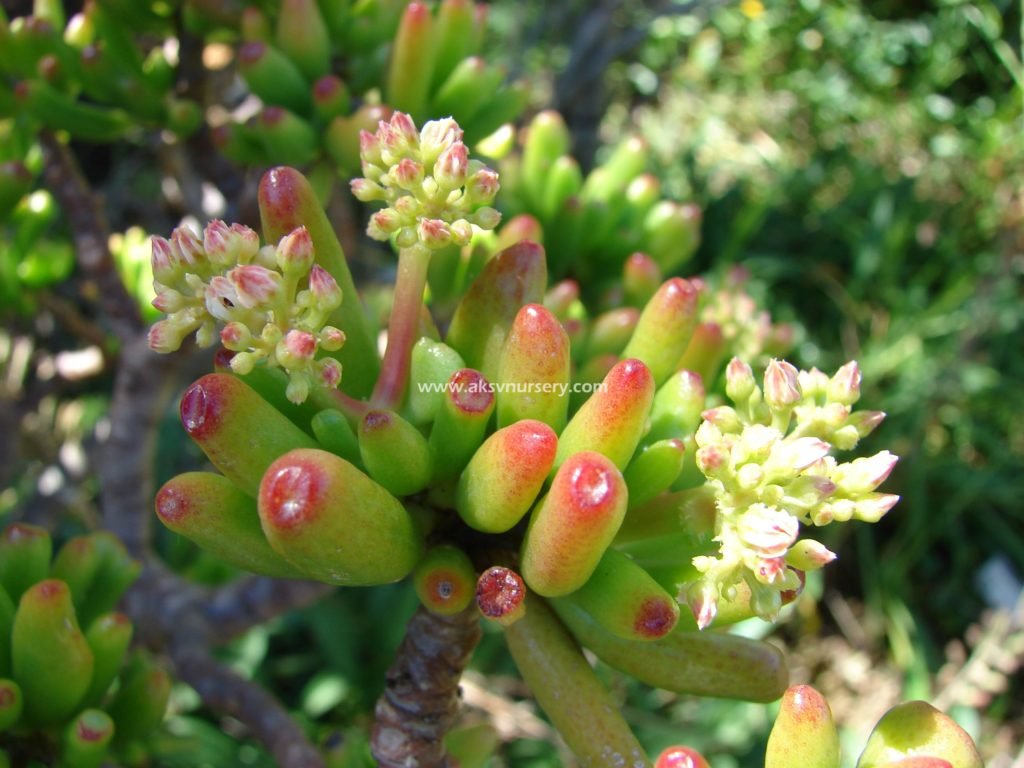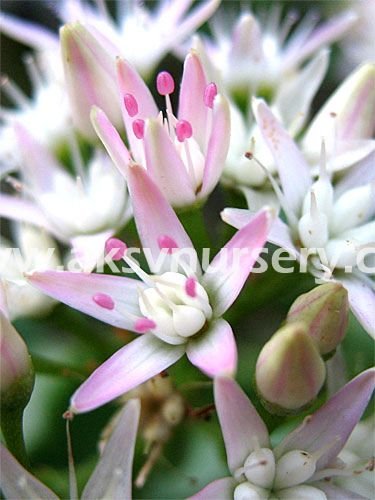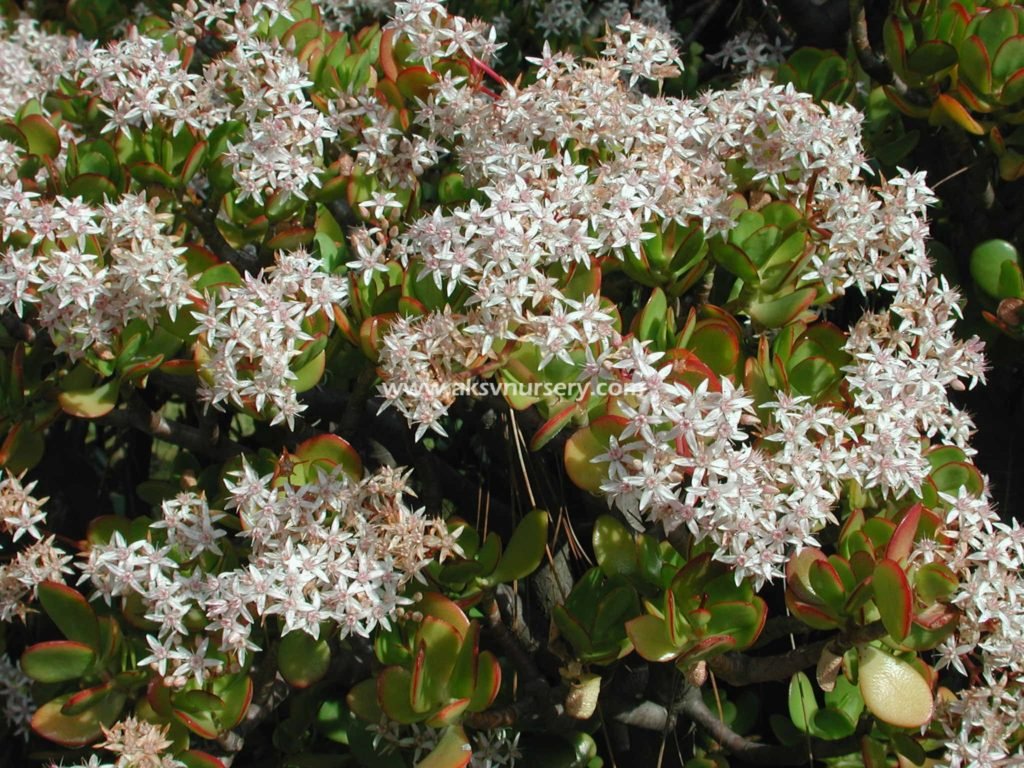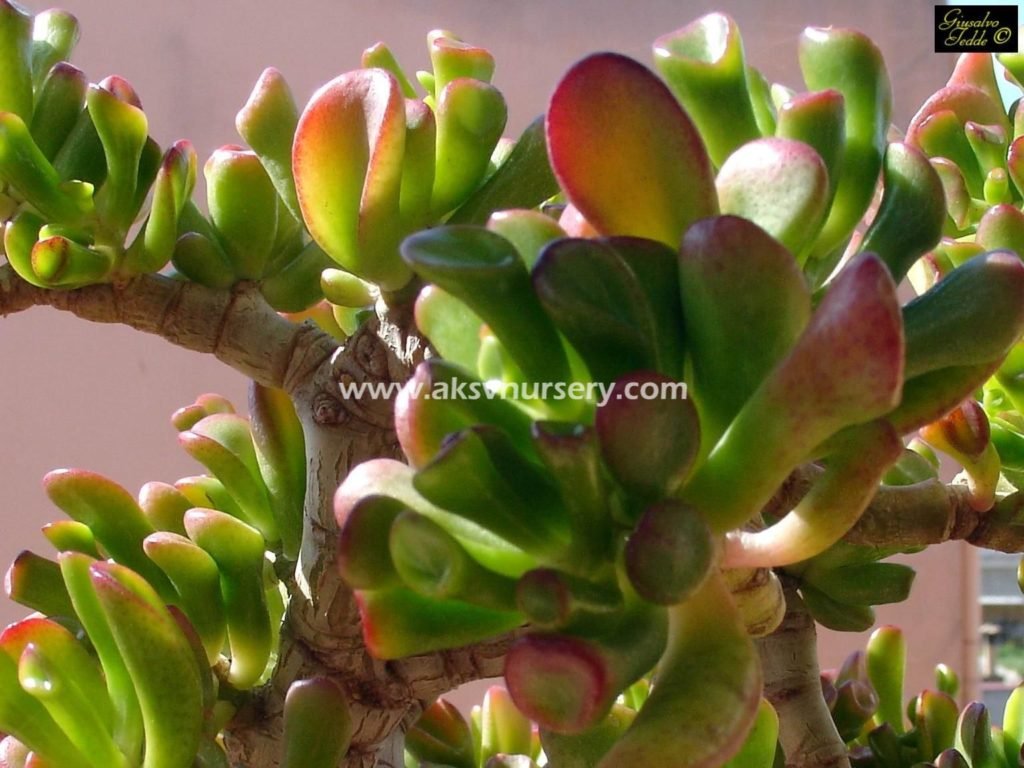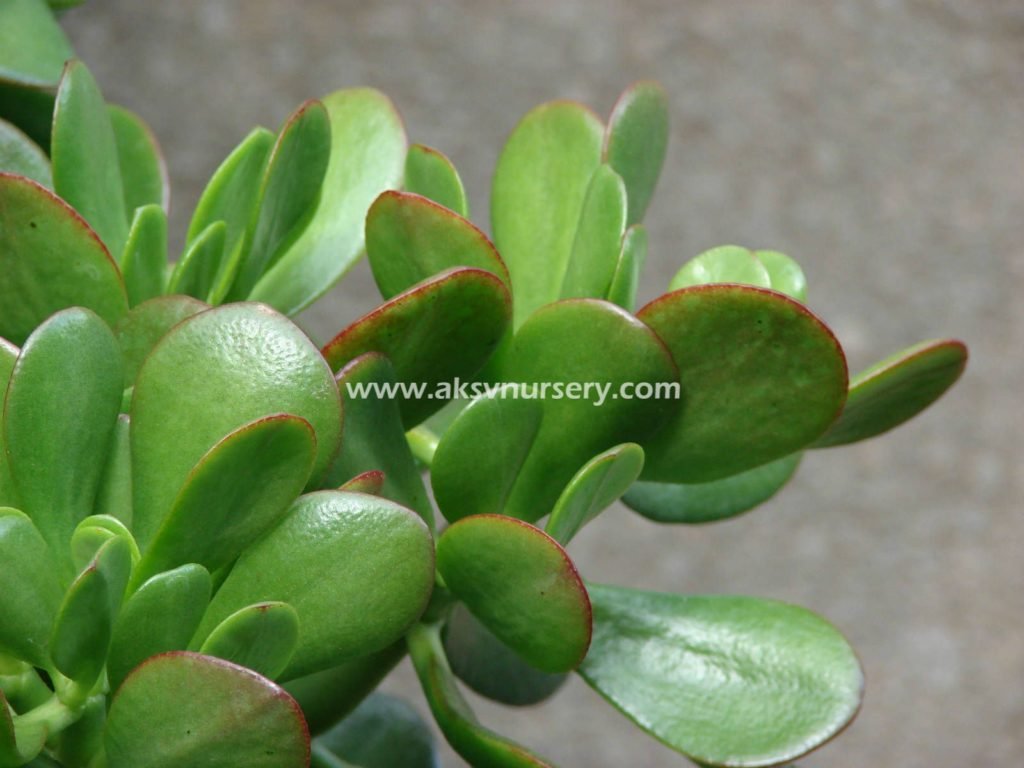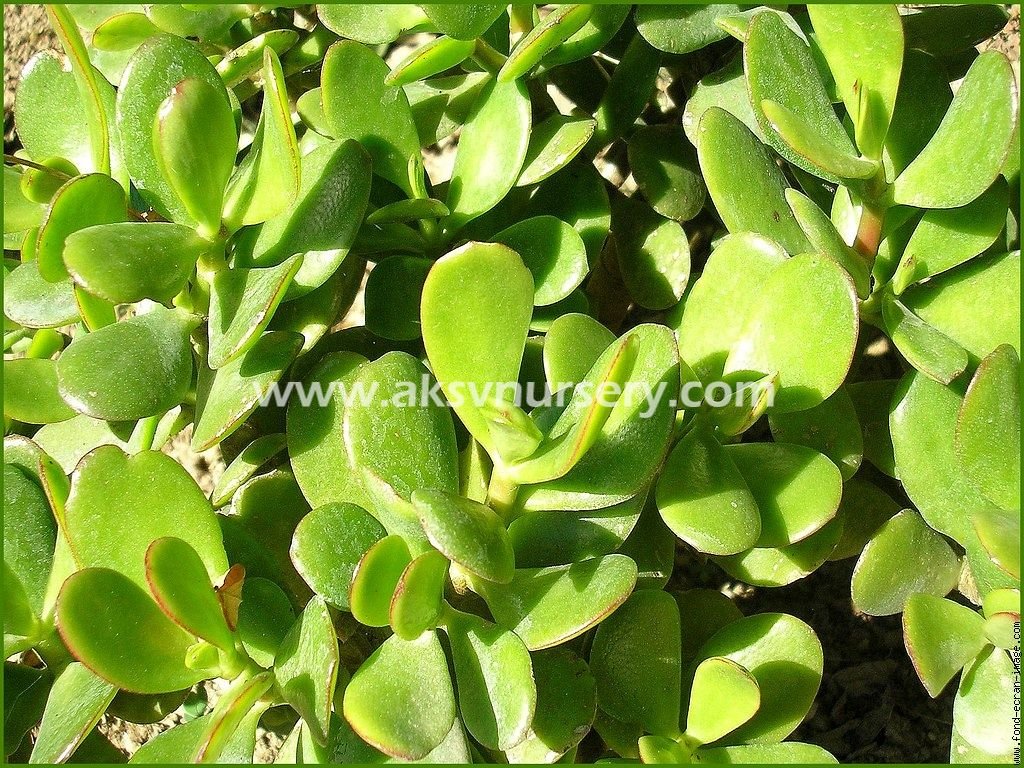Crassula ovata, Crassula argentea, Crassula portulacea
Family: Crassulaceae
Jade Plant, Dollar Plant
Origin: South Africa – Cape Province
Cultivated as a house plant in Europe and America for over a hundred years. Generally, it is a very easy and productive plant to grow, provided its needs are understood and met. Jades, and all other Crassulas are succulent plants, in that they have the ability to store water in its leaves, stems, and roots. Jade plants are best grown in very bright sunlight with low humidity, however if the plant is accustomed to dimmer light, you must move it into the sun in stages. Jades will sunburn if they are not used to the full sun. Jades are best grown between 55F at night and 75-80F during the day, however they will tolerate temperatures down to 40F. They should be repotted every two to three years. Use a well drained commercial potting soil mixed equally with sharp builder sand, and a scoop of bone meal added. Jade plants have an active and a dormant growing cycle. Watering and feeding are determined by the cycle. During the spring and summer months keep the soil slightly moist . Water liberally, approximately once per week but allow for slight drying between watering. Remove any excess water from pot saucer. Fertilize with a 10-20-10 or 5-10-5 ratio soluble plant food every two weeks. African violet food works very well for most succulents. Keep plant dry during the winter months as plant has a slight dormancy. Do not fertilize from November through March. Typically, all healthy Jades will bloom, usually around Christmas in the northern hemisphere. Blooming is triggered by the natural shortening of the days. If your plant is in a room which usually has lights turned on at night, it will more than likely fail to bloom for you.

